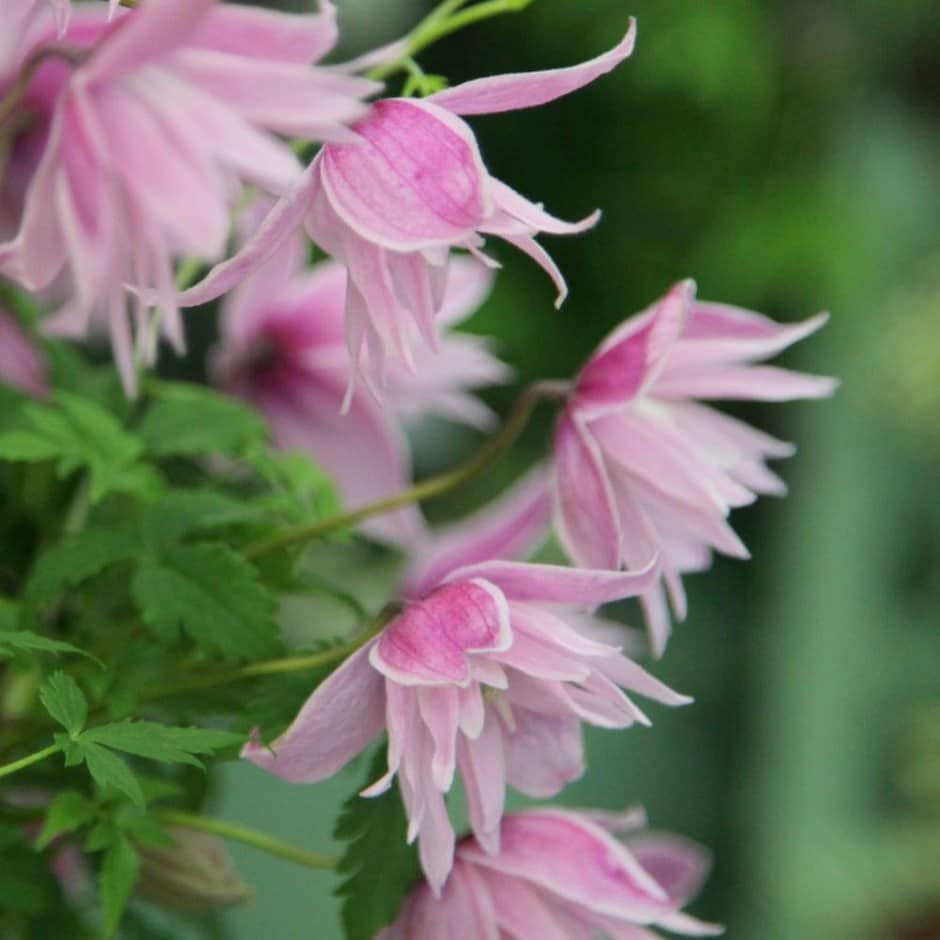Clematis 'Markham's Pink'
clematis (group 1) (syn. Clematis macropetala Markham's Pink)


Clematis 'Markham's Pink' looks lovely scrambling through a strong tree or shrub. Ideal for a north-facing site, this RHS award-winning clematis is also known as the downy clematis as the new shoots are covered with down.
How to care for Clematis Markham's Pink:
To avoid dry conditions, and to ensure good soil contact around the rootball, we advise planting climbers at least 30cm (12in), and preferably 45-60cm (18-24in) away from the base of a wall or fence. An even larger distance should be maintained when planting climbers beside an existing tree or shrub.
No routine pruning is necessary. If the spread of the plant needs to be restricted prune immediately after flowering, cutting back overlong shoots to healthy buds.
Apply a slow-release balanced fertiliser and a mulch of well-rotted garden compost around the base of the plant in early spring.
Flowering period:
- Jan
- Feb
- Mar
- Apr
- May
- Jun
- Jul
- Aug
- Sep
- Oct
- Nov
- Dec
Eventual height:
Eventual spread:
Position:
Full sun
Rate of growth:
Average
Soil:
Moderately fertile, moist, well-drained soil
Hardiness:
Fully hardy
-
This climber is deciduous so it will lose all its leaves in autumn, then fresh new foliage appears again each spring.
-
Humans: Skin irritant; Pets: Harmful if eaten
Product options
Add to basket
Delivery options (pick your preferred option at checkout)
Goes well with
Lonicera × purpusii 'Winter Beauty'
winter honeysuckle
| 2 litre pot | £21.59 |
|
| 10 litre pot | 60 - 80cm tall | £71.99 |
|
| 3 × 2 litre pots | £47.99 |
|
Clematis 'Markham's Pink'
clematis (group 1) (syn. Clematis macropetala Markham's Pink)


Clematis 'Markham's Pink' looks lovely scrambling through a strong tree or shrub. Ideal for a north-facing site, this RHS award-winning clematis is also known as the downy clematis as the new shoots are covered with down.
How to care for Clematis Markham's Pink:
To avoid dry conditions, and to ensure good soil contact around the rootball, we advise planting climbers at least 30cm (12in), and preferably 45-60cm (18-24in) away from the base of a wall or fence. An even larger distance should be maintained when planting climbers beside an existing tree or shrub.
No routine pruning is necessary. If the spread of the plant needs to be restricted prune immediately after flowering, cutting back overlong shoots to healthy buds.
Apply a slow-release balanced fertiliser and a mulch of well-rotted garden compost around the base of the plant in early spring.
Flowering period:
- Jan
- Feb
- Mar
- Apr
- May
- Jun
- Jul
- Aug
- Sep
- Oct
- Nov
- Dec
Eventual height:
Eventual spread:
Position:
Full sun
Rate of growth:
Average
Soil:
Moderately fertile, moist, well-drained soil
Hardiness:
Fully hardy
-
This climber is deciduous so it will lose all its leaves in autumn, then fresh new foliage appears again each spring.
-
Humans: Skin irritant; Pets: Harmful if eaten
Product options
Add to basket
Delivery options (pick your preferred option at checkout)
Goes well with
Lonicera × purpusii 'Winter Beauty'
winter honeysuckle
| 2 litre pot | £21.59 |
|
| 10 litre pot | 60 - 80cm tall | £71.99 |
|
| 3 × 2 litre pots | £47.99 |
|
